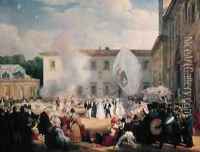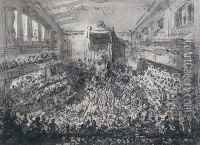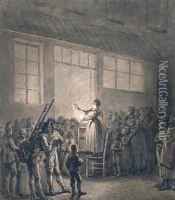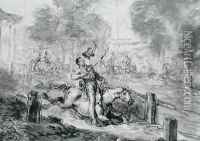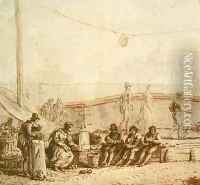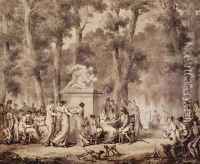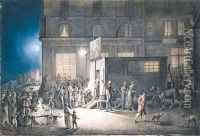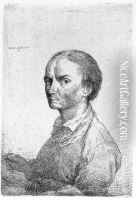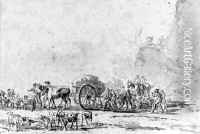Jean Pierre Norblin de la Gourdaine Paintings
Jean Pierre Norblin de La Gourdaine, born on July 15, 1745, in Misy-sur-Yonne, France, was a distinguished painter, engraver, and draughtsman, whose career flourished in Poland. Recognized for his significant contribution to Polish art, Norblin's work is a testament to his adaptability and skill in capturing the spirit of the Polish Enlightenment.
Norblin began his artistic journey in France but found his calling in Poland, where he moved in the late 1760s, initially working for the Czartoryski family, one of the most influential families in Poland. His talent quickly garnered the attention of other Polish aristocrats, and he spent the majority of his career in Poland, where he was deeply influenced by the country's culture, landscape, and political atmosphere.
A pioneer in adopting the Rococo and later the Enlightenment ideals into his art, Norblin's work is characterized by its diversity, ranging from genre scenes, landscapes, and portraits to battle scenes. He was particularly noted for his etchings and drawings, which vividly captured the dynamics and complexities of Polish society during a turbulent period of its history. His ability to depict a wide array of subjects with sensitivity and detail earned him a lasting place in the annals of Polish art history.
Norblin's contribution to Polish culture extended beyond his paintings and engravings. He also engaged in designing and decorating interiors of palaces and churches, showcasing his versatile talent and innovative approach to art. His work not only reflects the artistic trends of his time but also provides a unique insight into the social and political life in Poland during the late 18th and early 19th centuries.
After spending over thirty years in Poland, Norblin returned to France in the early 19th century, where he continued to work and teach until his death on February 23, 1830, in Paris. Despite his return to France, Norblin's legacy is most profoundly felt in Poland, where he left behind a rich body of work that continues to be celebrated for its historical significance and artistic merit. His impact on Polish art is remembered as that of a foreign artist who deeply immersed himself in the culture of his adopted country, enriching it with his diverse and dynamic artistic contributions.
